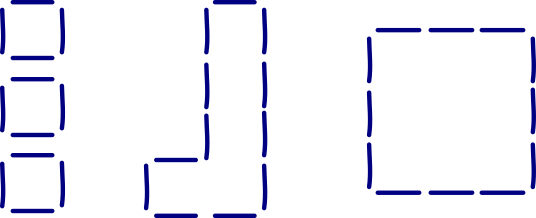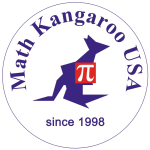Stick Areas
Solution:
Here are some examples for creating areas from 3 to 9.

Exploration:
Patterns in Stick Arrangements
Notice that sticks can always be grouped into pairs, which means only even numbers of sticks can form complete shapes without leftovers.
From there, two interesting cases emerge:
Case 1: Multiples of 4 (4n)
When the number of sticks is a multiple of 4, the shapes behave just like the example with 12 sticks:
-
Minimum Area: Achieved by making n small 1×1 squares.
-
Maximum Area: Formed by building a single n × n square.
Case 2: Multiples of 4 plus 2 (4n + 2)
These numbers add a twist—literally:
-
Minimum Area: Formed by using (n – 1) 1×1 squares and one 2×1 rectangle (the “bump”).
-
Maximum Area: Achieved with an n × (n + 1) rectangle.
This structure reveals an elegant pattern in how stick shapes grow, and a fun mix of logic and geometry at work! Would you like to see visual examples or apply this to a specific stick count?


